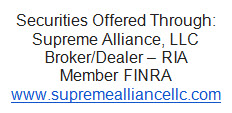A profit-sharing plan accepts discretionary employer contributions. There is no set amount that the law requires you to contribute. If you can afford to make some amount of contributions to the plan for a particular year, you can do so. Other years, you do not need to make contributions. Also, your business does not need profits to make contributions to a profit-sharing plan.
If you do make contributions, you will need to have a set formula for determining how the contributions are divided. This money goes into a separate account for each employee.
One common method for determining each participant’s allocation in a profit-sharing plan is the “comp-to-comp” method. Under this method, the employer calculates the sum of all of its employees’ compensation (the total “comp”). To determine each employee’s allocation of the employer’s contribution, you divide the employee’s compensation (employee “comp”) by the total comp. You then multiply each employee’s fraction by the amount of the employer contribution. Using this method will get you each employee’s share of the employer contribution.
If you establish a profit-sharing plan, you:
- Can have other retirement plans
- Can be a business of any size
- Need to annually file a Form 5500
As with 401(k) plans, you can make a profit-sharing plan as simple or as complex as you want. You may purchase a pre-approved profit-sharing plan document from a benefits professional or financial institution to cut down on administrative headaches.
Pros and cons
- Flexibile contributions – contributions are strictly discretionary
- Good plan if cash flow is an issue
- Administrative costs may be higher than under more basic arrangements (SEP or SIMPLE IRA plans)
- Need to test that benefits do not discriminate in favor of the highly compensated employees.
Who contributes
Employer contributions only. If a salary deferral feature is added to a profit-sharing plan, it is a "401(k) plan."
Contribution limits
http://www.irs.gov/retirement-plans/choosing-a-retirement-plan-money-purchase-plan
Filing requirements
Annual filing of a Form 5500-series return/report is required. Participant disclosures are also required.
Participant loans
Permitted.
In-service withdrawals
Yes, but subject to possible 10% additional tax if under age 59-1/2 and no other exception applies.
This information is not intended to be tax or legal advice, and it may not be relied on for the purpose of avoiding any federal tax penalties. You are encouraged to seek tax or legal advice from an independent professional advisor.


